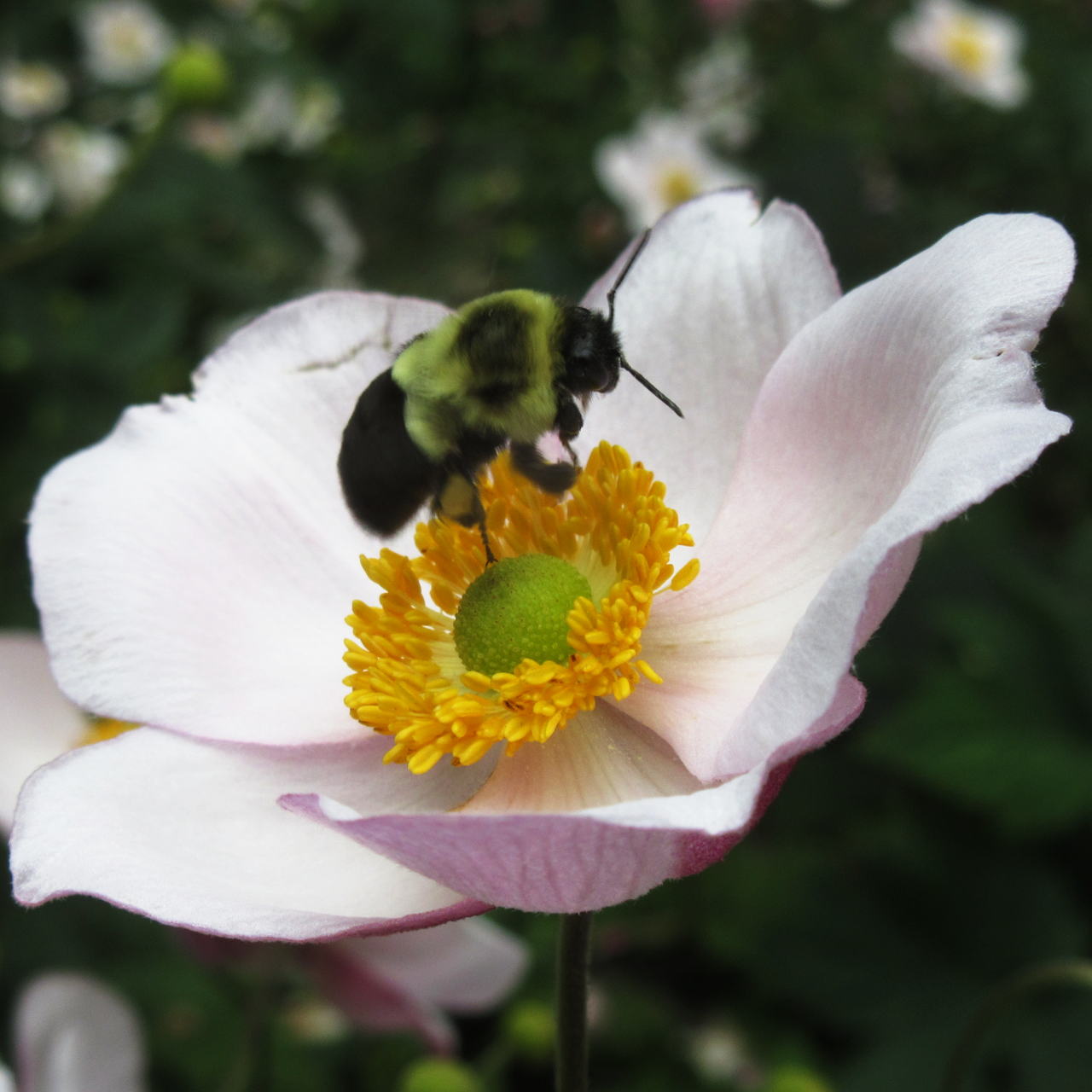Somebody recently asked me to write something on neonicotinoides. At first, I was rather reluctant since the topic can raise a few hackles, but the more I thought about it, the more I thought I should write something up.
So first, what are neonicotinoides. Essentially, they’re a class of pesticides based on nicotine (hence neo for new, and nicotinoides for the nicotine family). Nicotine is a powerful insecticide that affects the nervous system of insects (and mammals to a lesser extent, hence the addition of smoking). Synthetic forms (the neo part) were being developed since 1970 and have been in used for nearly 40 years. Generally speaking, neonicotinoides are very effective against sucking insects like aphids, chewing insects, and even soil insects like grubs. Relative to many other insecticides, they have low mammalian toxicity and a low impact on beneficial insects. They’re much safer with a far shorter residual than many other insectides.
Do neonicotinoides kill bees? Bluntly speaking, yes. It’s an insecticide. It kills insects. That’s what it’s supposed to do. So does Sevin, so do pyrethrums from the chrysanthemum, so does Malathion for mosquitoes, and so on. However, if it’s used properly, responsibly, and at the correct rates, it’s impact can be minimal – or at least less than other pesticides out there. You can find lots of studies on how doping bees with copious amounts neonicotinoides kills them, but that’s to be expected. But bees, butterflies, and hummingbirds don’t die when they visit the nicotiana genus which is the tobacco family, the source of the original nicotine. There are also many other studies of factors that contribute to bee problems that are not related to neonicotinoides.
Like everything, proper use is the key to the balance of effectiveness and safety. The golden rule with any pesticide, neonicotinoid or not, is never to apply it when bees are actively foraging. That’s a huge no-no. The hype started when somebody didn’t follow the golden rule and decided to spray his canola field while in full flower on a calm and sunny day when bees were a plenty. That’s just bad farming no matter where you are. It wasn’t long-term residue that killed those bees, it was an intense direct spray that should never have happened. For over twenty years before that, nobody had any qualms about neonicotinoids, but that one bone-headed move brought everything into the spotlight.
To put it into another perspective, let’s look at something else that has a similar natural origin that has both been a miracle of medicine as well as a bane for abuse: opioids. A substance based on “poppy juice” that has been a staple of modern medicine to this day. Without them, surgery would be almost unbearable as would many other ailments. The pain of broken bones, advanced arthritis, palliative care, and far more. It’s highly effective and safe to use – when used properly. When not used properly or abused, it’s effects are disastrous with addiction and death as common side-effects. Sound familiar?
So before we blindly label something in this world as bad or evil, let’s look a the bigger picture. We need to be conscious of proper and safe use of everything we touch. Everything. From pesticides to salt. Never should we assume that something is “safe” because it is accessible, but instead be conscious of how to use something responsibly to make it as safe as possible.
Farmers and industry are working well to improve education and mitigate the side effects. Coated seeds were notorious for spreading neonicotinoid dust when they first came out, but new developments and rules now require proper filters to prevent the dust. Farmers in Ontario are required to take a course and be tested every five years. Using more advanced techniques, we’re able to reduce our application rates of pesticides thereby lowering the risks. Nobody wants to spray anything, but it’s a necessary evil if we want to survive so we try our best to minimize it.
Personally, I have neonicotinoids as part of my toolkit to grow clean plants. I know exactly when to use them, how to use them, and how to keep our pollinators and people safe. It’s a tool in a toolkit and it can be used properly and responsibly when it is the best tool for the job. I would much rather grow a plant or eat fruits and vegetables treated properly with neonicotinoides or otherwise used responsibly than not.
And remember how I mentioned that neonicotinoides are great for sucking insects? It’s also a common ingredient in flea and tick medication. Chances are, we’ve already applied these substances to our furry friends we love and adore, but we did it responsibly and safely and have reaped the benefits while minimizing side-effects. Now if we could just mitigate the negative side-effects of inhaling non-neo nicotine, we’d be in a much better place.

